The Legacy of the TTASAAN Report-Premature Conclusions and Forgotten Promises: A Review of Policy and Practice Part I
- PMID: 35450131
- PMCID: PMC9017602
- DOI: 10.3389/fneur.2021.749579
The Legacy of the TTASAAN Report-Premature Conclusions and Forgotten Promises: A Review of Policy and Practice Part I
Abstract
Brain perfusion single photon emission computed tomography (SPECT) scans were initially developed in 1970's. A key radiopharmaceutical, hexamethylpropyleneamine oxime (HMPAO), was originally approved in 1988, but was unstable. As a result, the quality of SPECT images varied greatly based on technique until 1993, when a method of stabilizing HMPAO was developed. In addition, most SPECT perfusion studies pre-1996 were performed on single-head gamma cameras. In 1996, the Therapeutics and Technology Assessment Subcommittee of the American Academy of Neurology (TTASAAN) issued a report regarding the use of SPECT in the evaluation of neurological disorders. Although the TTASAAN report was published in January 1996, it was approved for publication in October 1994. Consequently, the reported brain SPECT studies relied upon to derive the conclusions of the TTASAAN report largely pre-date the introduction of stabilized HMPAO. While only 12% of the studies on traumatic brain injury (TBI) in the TTASAAN report utilized stable tracers and multi-head cameras, 69 subsequent studies with more than 23,000 subjects describe the utility of perfusion SPECT scans in the evaluation of TBI. Similarly, dementia SPECT imaging has improved. Modern SPECT utilizing multi-headed gamma cameras and quantitative analysis has a sensitivity of 86% and a specificity of 89% for the diagnosis of mild to moderate Alzheimer's disease-comparable to fluorodeoxyglucose positron emission tomography. Advances also have occurred in seizure neuroimaging. Lastly, developments in SPECT imaging of neurotoxicity and neuropsychiatric disorders have been striking. At the 25-year anniversary of the publication of the TTASAAN report, it is time to re-examine the utility of perfusion SPECT brain imaging. Herein, we review studies cited by the TTASAAN report vs. current brain SPECT imaging research literature for the major indications addressed in the report, as well as for emerging indications. In Part II, we elaborate technical aspects of SPECT neuroimaging and discuss scan interpretation for the clinician.
Keywords: ADHD; PTSD-posttraumatic stress disorder; bipolar disorder; dementia; depression; neurotoxicity; seizure; traumatic brain injury.
Copyright © 2022 Pavel, Henderson and DeBruin.
Conflict of interest statement
DP is Director of PathFinder Brain SPECT which is a clinical service corporation providing SPECT functional neuroimaging and had no research funding. He is deceased. TH is the president and principal owner of The Synaptic Space, a neuroimaging consulting firm. He is also CEO and Chairman of the Board of Neuro-Luminance Corporation, a medical service company. He is also president and principal owner of Dr. Theodore Henderson, Inc., a medical service company. He is also Vice-President of the Neuro-Laser Foundation, a non-profit organization. He is a member of and a former officer of the Brain Imaging Council Board of the Society of Nuclear Medicine and Molecular Imaging (SNMMI). Since 2017, he has served in the SNMMI Brain Imaging Outreach Working Group. Currently, he serves as president of the International Society of Applied Neuroimaging. TH has no ownership in, and receives no remuneration from, any neuroimaging company. No more than 5% of his income is derived from neuroimaging. SD is President of Good Lion Imaging LLC involved in the post-processing and display of functional brain scan data. The reviewer DA declared a past co-authorship with one of the authors TH to the handling editor.
Figures
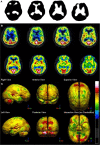

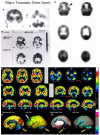
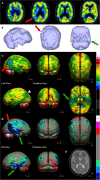
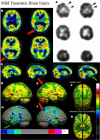
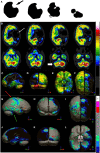

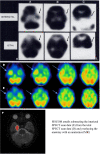
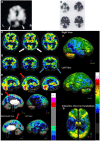
Similar articles
-
The Legacy of the TTASAAN Report - Premature Conclusions and Forgotten Promises About SPECT Neuroimaging: A Review of Policy and Practice Part II.Front Neurol. 2022 May 17;13:851609. doi: 10.3389/fneur.2022.851609. eCollection 2022. Front Neurol. 2022. PMID: 35655621 Free PMC article.
-
Single photon emission computed tomography for the diagnosis of coronary artery disease: an evidence-based analysis.Ont Health Technol Assess Ser. 2010;10(8):1-64. Epub 2010 Jun 1. Ont Health Technol Assess Ser. 2010. PMID: 23074411 Free PMC article.
-
Neuronuclear assessment of patients with epilepsy.Semin Nucl Med. 2008 Jul;38(4):227-39. doi: 10.1053/j.semnuclmed.2008.02.004. Semin Nucl Med. 2008. PMID: 18514079 Review.
-
A review of the use of single-photon emission computerized tomography as a diagnostic tool in mild traumatic brain injury.Appl Neuropsychol. 2002;9(2):92-105. doi: 10.1207/S15324826AN0902_4. Appl Neuropsychol. 2002. PMID: 12214827 Review.
-
Correlation of magnetic resonance imaging findings with hexamethylpropyleneamine oxime brain single photon emission computed tomography in ischemic stroke patients in the subacute stage.Acta Radiol. 2006 May;47(4):401-7. doi: 10.1080/02841850600570490. Acta Radiol. 2006. PMID: 16739701 Clinical Trial.
Cited by
-
Clinical and Neuropathological Evaluations of the New Brunswick Neurological Syndrome of Unknown Cause.JAMA Neurol. 2025 May 7;82(8):788-96. doi: 10.1001/jamaneurol.2025.1718. Online ahead of print. JAMA Neurol. 2025. PMID: 40332886
-
Longitudinal Single Photon Emission Computed Tomography Neuroimaging as an Indication of Improvement in Psychiatric Disorders in a Community Psychiatric Practice.Front Psychiatry. 2022 Mar 25;13:787186. doi: 10.3389/fpsyt.2022.787186. eCollection 2022. Front Psychiatry. 2022. PMID: 35401270 Free PMC article.
-
Increased Asymmetric Perfusion of the Cerebral Cortices and Thalamus Indicates Individuals at Risk for Bipolar Disorder: A Family Cohort Single Photon Emission Computed Tomography Neuroimaging Study.Front Psychiatry. 2022 May 10;13:829561. doi: 10.3389/fpsyt.2022.829561. eCollection 2022. Front Psychiatry. 2022. PMID: 35619621 Free PMC article.
-
Outcome Measures for Disease-Modifying Trials in Parkinson's Disease: Consensus Paper by the EJS ACT-PD Multi-Arm Multi-Stage Trial Initiative.J Parkinsons Dis. 2023;13(6):1011-1033. doi: 10.3233/JPD-230051. J Parkinsons Dis. 2023. PMID: 37545260 Free PMC article.
-
The Legacy of the TTASAAN Report - Premature Conclusions and Forgotten Promises About SPECT Neuroimaging: A Review of Policy and Practice Part II.Front Neurol. 2022 May 17;13:851609. doi: 10.3389/fneur.2022.851609. eCollection 2022. Front Neurol. 2022. PMID: 35655621 Free PMC article.
References
-
- Canadian Association of Nuclear Medicine . CANM Guidelines for Brain Perfusion Single Photon Emission Computed Tomography (SPECT). (2021). Available online at: https://canm-acmn.ca/guidelines/ (accessed July 14, 2021).
-
- van Dellen JR, Danziger A. Failure of computerized tomography to differentiate between radiation necrosis and cerebral tumour. S Afr Med J. (1978) 53:171–2. - PubMed
Publication types
LinkOut - more resources
Full Text Sources
Research Materials

